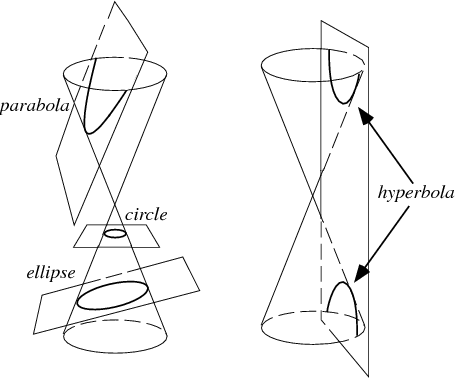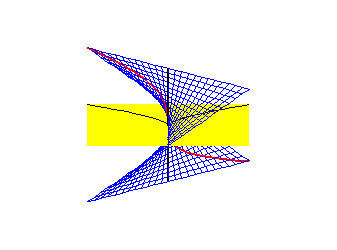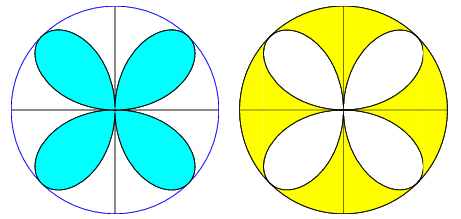


Open University pure maths study and research blog




Show[
ContourPlot3D[x^2 + y^2 - z^2, {x, -2, 2}, {y, -2, 2}, {z, -2, 2}],
ContourPlot3D[-2x + y - z, {x, -2, 2}, {y, -1, 1}, {z, -2, 2}]
]


An interesting project could be built around Molien's Theorem in invariant theory, which is mentioned in §3 of Chapter 7. The algorithm given in STURMFELS (1991) could be implemented to find a set of generators for k[x\, ... ,Xn]^G. This could be applied to find the invariants of some larger groups, such as the rotation group of the cube in R^3. Molien's theorem is also discussed in Chapter 7 of BENSON and GROVE (1985).
i96 : describe(R) ZZ -- [X] 2 o96 = ---------- 3 X + X + 1 i97 : ( (X)_R )^-1 2 o97 = X + 1 o97 : R i98 : ( (X^2) )^-1 2 o98 = X + X + 1 o98 : R i99 : ( (1+X)_R )^-1 2 o99 = X + X o99 : R
i136 : i=0; while i < 7 list (R_0)^i do i = i+1
2 2 2 2
o137 = {1, X, X , X + 1, X + X, X + X + 1, X + 1}
o137 : List


Mathematics: is it the fabric of MEST?
This is my voyage
My continuous mission
To uncover hidden structures
To create new theorems and proofs
To boldly go where no man has gone before

(Raumpatrouille – Die phantastischen Abenteuer des Raumschiffes Orion, colloquially aka Raumpatrouille Orion was the first German science fiction television series. Its seven episodes were broadcast by ARD beginning September 17, 1966. The series has since acquired cult status in Germany. Broadcast six years before Star Trek first aired in West Germany (in 1972), it became a huge success.)
